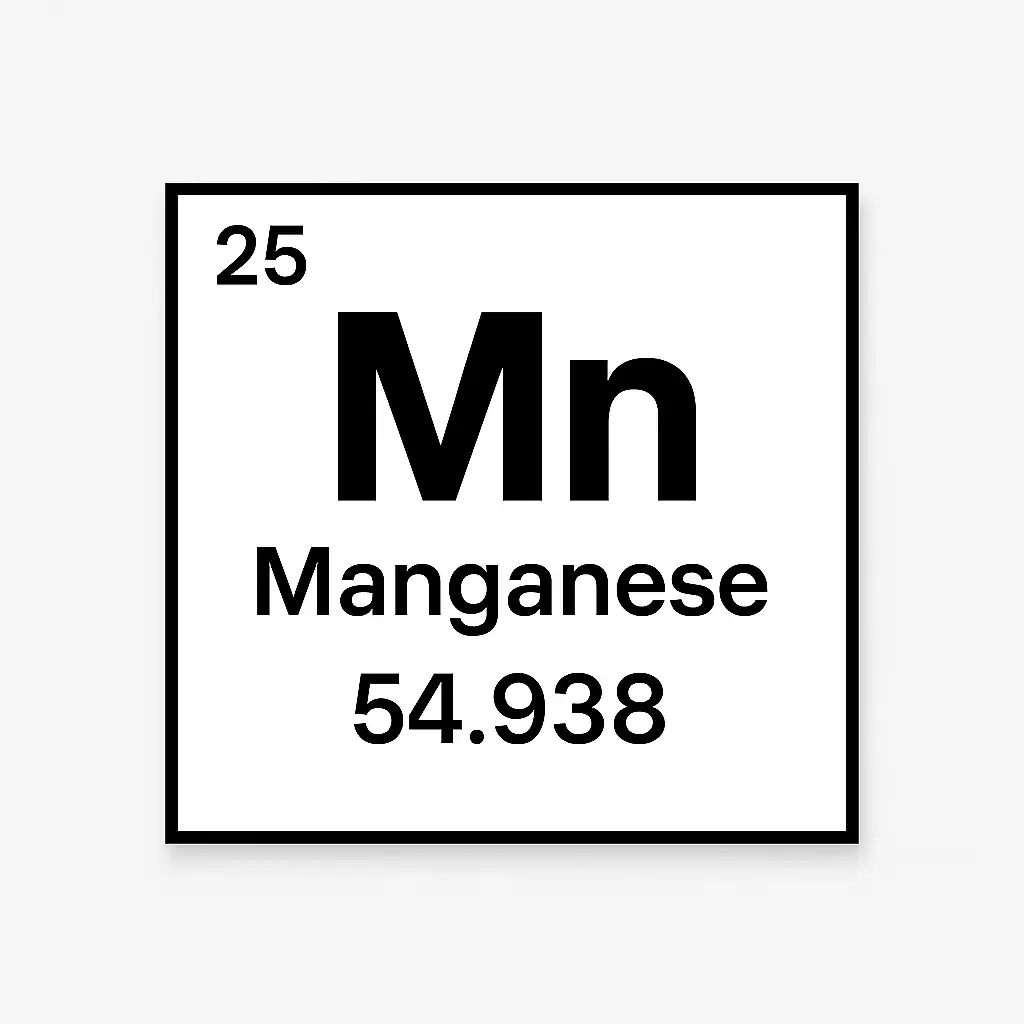Introduction
Manganese, element 25 in the periodic table, exhibits significant scientific value. As a transition metal, it plays a key role in various fields. Manganese benefits include its contribution to steel strength and biological processes. By May 2025, its applications in industry and health are well-documented. This article examines Manganese benefits, such as its role in alloys and metabolism. It covers its discovery in 1774 by Johann Gahn in Sweden. Manganese uses in batteries and agriculture are explored. Additionally, Manganese compounds, like oxides, show utility in catalysis.
The element occurs naturally in Earth’s crust. Its presence in minerals like pyrolusite is notable. Studies highlight its impact on material science. Historical records trace its scientific journey. Manganese benefits extend to sustainable technologies. Research continues to reveal its potential.
Manganese influences multiple disciplines significantly. Scientific literature documents its evolution thoroughly. Advanced tools, such as spectrometry, aid its analysis. This article contributes to the understanding of element 25. It provides a comprehensive review of its contributions. The element’s importance in modern science is evident.

Physical and Chemical Characteristics of Manganese
Manganese exhibits distinct physical and chemical traits. The metal has a silvery-gray appearance with a metallic sheen. Its atomic number is 25, and its atomic weight is 54.94. Manganese has a melting point of 1,246°C, indicating moderate heat resistance. The boiling point reaches 2,061°C, showing thermal stability. Manganese benefits include its hardness, enhancing alloy durability.
It forms a body-centered cubic crystal structure. This structure contributes to its mechanical strength. The density of Manganese is 7.21 g/cm³, typical for transition metals. Manganese can exist in oxidation states from +2 to +7. This range supports its use in chemical reactions. Its electrical conductivity is moderate but functional.
Manganese resists corrosion under specific conditions. Its thermal conductivity suits industrial applications. The metal is brittle in its pure form. However, alloying improves its toughness significantly. Manganese’s magnetic properties are weak but present. These characteristics make it valuable in engineering.

The Historical Background of Manganese
Manganese discovery marks a pivotal moment in chemistry. In 1774, Johann Gahn isolated the element in Sweden. He extracted it by reducing manganese dioxide with carbon. Earlier, in 1771, Carl Wilhelm Scheele identified manganese oxide. Gahn built on Scheele’s work to confirm the element. The name Manganese derives from the Latin “magnes,” meaning magnet.
This name reflects its early association with magnetic ores. Initial extraction methods were rudimentary and inefficient. Chemists faced challenges in isolating pure Manganese. In the 19th century, electrolysis improved extraction techniques. The process enabled broader industrial applications. Manganese discovery expanded the understanding of transition metals.
Geological studies later revealed its global abundance. Pyrolusite, the primary ore, is mined in South Africa. Modern techniques, like X-ray analysis, enhance its study. New deposits in Brazil and Australia ensure supply. These findings support global industries. The element’s history informs current scientific research.

Applications of Manganese in Industry and Technology
Manganese uses demonstrate its versatility across sectors. The metal is essential in steel production for strength. Approximately 90% of Manganese is used in steel alloys. These alloys resist wear in construction and machinery. Manganese enhances the durability of railway tracks. It is also applied in automotive components for reliability.
Manganese uses extend to battery technology significantly. It serves as a cathode material in alkaline batteries. Additionally, Manganese improves soil fertility in agriculture. Fertilizers containing Manganese boost crop yields. Its role in glassmaking removes unwanted green tints. Manganese benefits glass clarity and quality.
The element supports sustainable technologies effectively. It reduces emissions in steel manufacturing processes. Manganese is used in lithium-ion batteries for electric vehicles. Its applications in water treatment are growing. Environmental concerns from mining are being addressed. Recycling initiatives reduce ecological impact over time.
Manganese’s role in ceramics produces vibrant colors. Its use in electronics, like capacitors, is emerging. The demand for Manganese rises with green tech trends. Its applications balance functionality with environmental goals. Manganese continues to drive innovation in engineering. Let’s examine its chemical compounds next.

Chemical Compounds and Their Significance
Manganese compounds highlight the element’s chemical diversity. Manganese dioxide (MnO₂) is a widely used compound. It acts as a depolarizer in dry-cell batteries. Manganese dioxide also functions as a catalyst in reactions. Other Manganese compounds include permanganates, like potassium permanganate. These are applied in disinfectants and water treatment.
Manganese forms complexes with various ligands. The +7 oxidation state is common in permanganates. These complexes show stability in chemical processes. Manganese compounds also have biological roles. Trace amounts support enzyme functions in humans. However, excess Manganese can be toxic.
Manganese ions produce colors from purple to brown. These colors are valuable in analytical chemistry. Furthermore, Manganese compounds contribute to industrial catalysis. They improve efficiency in chemical synthesis. Their thermal stability suits high-temperature applications. Manganese compounds are explored in nanotechnology research.
Their properties enable advancements in material science. The study of these compounds continues to grow. Manganese’s chemical versatility remains a focus for scientists. Its compounds are used in pigment production. They also play a role in corrosion-resistant coatings. Applications in pharmaceuticals are under investigation.

Leave a Reply